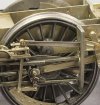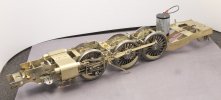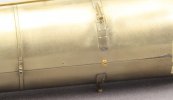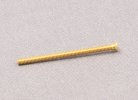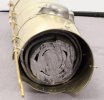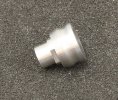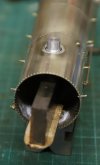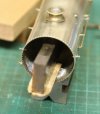OzzyO
Western Thunderer
Hello Rob,
the real things did not just pivot out and back . But to get them to move you had to lift the bottom edge by about 1/2" and then put them into position, you could not lift them to high so there was no possibility of losing one of them on the road, the closed position was normally used for cleaning the front face of the guards, so you did not have to reach too far outside of the loco. The bracket also locked them in place out (open) folded back (closed I suppose).
Now lets see you do that.
And the door was shut, I did not have time to get my hat and coat and it's raining cats and dogs.
ATB
OzzyO.
PS, let me know and I'll do you a quick sketch
the real things did not just pivot out and back . But to get them to move you had to lift the bottom edge by about 1/2" and then put them into position, you could not lift them to high so there was no possibility of losing one of them on the road, the closed position was normally used for cleaning the front face of the guards, so you did not have to reach too far outside of the loco. The bracket also locked them in place out (open) folded back (closed I suppose).
Now lets see you do that.
And the door was shut, I did not have time to get my hat and coat and it's raining cats and dogs.
ATB
OzzyO.
PS, let me know and I'll do you a quick sketch

